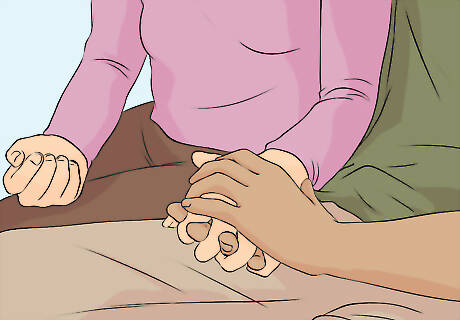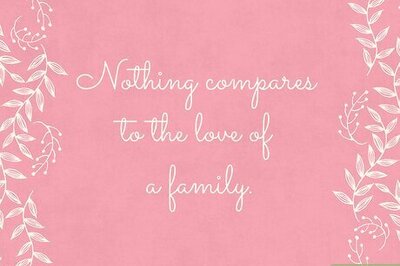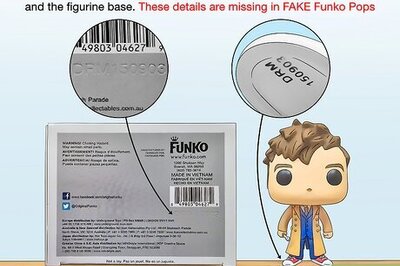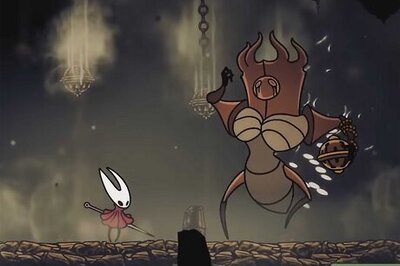
views
- A green flag is any sort of action/trait that points to healthy behavior. They're great ways to tell if a relationship is functional or dysfunctional.
- One major green flag is your partner’s ability to communicate in a healthy way, like actively listening or expressing themselves honestly.
- A huge green flag is when your relationship moves at a comfortable pace—you're gradually getting physically and emotionally intimate rather than rushing into things.
- Feeling comfy, happy, and content around your partner is the biggest green flag ever. Any potential issues and conflicts can be resolved as long as you feel respected and safe!
What is a green flag?

A green flag is an action or trait that promotes a healthy relationship. While its opposite term, red flag, describes potentially harmful behaviors from a partner (like manipulation or lack of empathy), a green flag is a totally positive sign. Identifying green flags from people can clue you into the success of a relationship. Best of all, green flags are great, shining examples that can help you lead a healthier life. Some therapists may describe a green flag as a “green light” instead.
Examples of Green Flags

They actively listen. Active listening is key to building any partnership. It strengthens your bond and deepens your understanding of one another. If your partner makes an effort to understand and validate your feelings, it's clear that your emotional needs are a high priority for them. Not totally sure what active listening is? It's anything your partner does to show that they're plugged into what you're saying, like paraphrasing, clarifying your statements (“So what I’m hearing is…” or “Let me make sure I understand…”), and reflecting on them (“It sounds like you’re feeling…”). Not listening doesn’t mean your partner doesn’t care. Common roadblocks to active listening are reassuring and fixing. Your partner means well with these responses, but they don’t necessarily grasp the core of what you’re truly trying to say. If your partner does any of these, try telling them “I appreciate you trying to help, but I just need you to listen right now.”

They respect your boundaries. Healthy partnerships are based on mutual respect. That includes honoring whatever you’re not comfortable with. Boundaries can be physical (your comfort being touched in certain places), emotional (being spoken to in a respectful way), mental (your values and belief systems), material (your comfort with certain items being used), or time-based (respecting your time by being prepared and present). Healthy partners will never, ever cross these boundaries—even when they’re upset with you. If you’re struggling with establishing boundaries, clear communication is always a great starting point. Sit your partner down and directly state what you are and aren’t okay with. Try to use I feel statements such as “I feel uncomfortable when…” to make it seem less accusatory. Create reasonable consequences when a boundary is crossed. For example, if someone constantly wastes your time by being late, tell them you’ll spend less time with them if it happens again. Sometimes boundaries get crossed accidentally! Maybe you ate the least bagel or said something you didn’t mean when you were angry. If you cross a boundary by mistake, apologize, clarify, and be more cautious in the future.

They’re curious about your needs and interests. Great communication revolves around talking just as much as it does listening. If your partner regularly asks you how you’re feeling and asks for clarification on things they don’t understand, that shows your well-being is important to them, and that they want to know you the best they can. An easy way to show your curiosity is by asking clarifying questions after each statement. For example, if someone says “I want to buy a house someday,” ask “what kind of house do you want?” If someone says “I’m hungry,” ask “what would you like to eat?”

They know how to express how they feel. It’s a great sign when your partner can clearly share their emotions. Too often, we can get so wrapped up in our emotions that we take them out on other people. It makes it so much easier to understand one another if your partner is able to voice when they feel a certain way and the intensity of that feeling. It's this understanding that helps solve the majority of relationship problems. It takes a little practice to communicate your feelings well. One easy method to start sharpening this skill is taking some time to register how you’re feeling in a given situation. Are you breathing fast? That could be a sign of anger or fear. Chest feeling heavy? Maybe you’re sad. Remember not to judge your feelings once you register them. No emotion is good or bad. All feelings need to be felt.

You can be vulnerable around each other. If you and your partner feel comfortable being “emotionally exposed” with one another—or, rather, sharing emotions that may feel uncomfortable like shame, guilt, insecurity, or fear—it proves you make each other safe enough to let your walls down. This vulnerability allows you to build your relationship together and let each other in, validating feelings like love, comfort, joy, and acceptance. It’s by no means a bad sign if vulnerability scares either of you. In fact, it’s totally normal! The best way to create a safe environment for vulnerability is with validation. Tell your partner reasons you respect them unconditionally and make it clear you will not judge them. Being vulnerable takes enormous courage. When your partner expresses vulnerability, acknowledge this and commend them for their bravery.

The relationship moves at a reasonable pace. Steadiness is key to a healthy relationship timeline. If the relationship doesn’t feel like it’s moving too fast (saying “I love you” after 3 dates) or too slow (it’s been 2 years and you still haven’t met each other’s friends), that’s a green flag. Just remember: speed is different for everyone. “Too fast” for you may be “too slow” for someone else, so try not to compare your relationship to others. If you feel like something's off, don't be afraid to communicate!

They have other quality friends they spend time with. If your partner has other friendships with people you respect, this shows that they're happy and comfortable having healthy relationships with others. As an added bonus, it's a good sign that your dynamic is less likely to be codependent. Every relationship has ups and downs, so it’s nice to know that your partner has other people they can count on for companionship and emotional support.

They’re self-aware. Self-awareness shows your partner has a healthy sense of self. They recognize their limitations, their strengths (which are just as important), and how they come across. Two key signs of self-awareness are introspection (they regularly reflect on their beliefs, who they are, and what they stand for) and feedback (they seek the wisdom of others to improve themselves). To cultivate more self-awareness in yourself, start asking “what” instead of “why.” Instead of focusing on why you feel a certain way or you received a certain criticism, focus on what the feeling is or the qualities of the criticism itself.

You can count on them consistently. If your partner is reliable, it means you can trust them. Any healthy relationship will put you in a spot where you’ll need to depend on each other. If your partner regularly shows up for you, it shows they’re ready and willing to commit the necessary time and energy to your relationship as it grows.

You feel like friends AND partners. While romantic attraction is important, good relationships are founded on a healthy friendship. Take some time to share and understand each other’s hopes and dreams, likes and dislikes, families, guilty pleasures, and all the things you know about any of your other close friends. A relationship that feels like a friendship is linked to long-term success.

They’re good with compromise. A healthy partnership is rooted in equality; you should both have the same say in decision-making. Your relationship is definitely capable of long-term growth if your partner is flexible and/or actively makes an effort to sacrifice some of their wants to find a solution that works for both of you.

They try to incorporate you into their life. Just as it’s a great sign for you to have boundaries for each other’s independent hobbies and social circles, your partner’s willingness to invite you into key aspects of their life shows that they want to share a future with you. If your partner introduces you to their close friends, their family, or even shows you an activity or movie they love, it’s a sign your opinion matters and they want you around.

You have shared interests and values. The more you have in common, the easier it is to build a relationship. Having a mutual core system of beliefs is important for building a life together. It’s also easier to connect when you have a lot of things to bond over. While it’s by no means a red flag if you and your partner are different (couples of different religions, nationalities, and political preferences make it work all the time), the ability to accept each other’s differences and find common ground is essential.

You feel good when you’re around them. The simplest and most common green flag is often the most overlooked. If you like being around your partner and you like yourself when you’re in their company, odds are you have a strong relationship. Issues like boundaries, trust, and pacing can be improved with time and communication as long as you feel respected and enjoy their company.
What is a red flag?
Red flags are behaviors that signal you might be in an unhealthy relationship. When someone acts in a way that’s troubling or upsetting, this is referred to as a red flag. They're often unhealthy patterns that you observe in your partner over time. While they rarely signify a need for any immediate action, they’re important to identify so you can know if the relationship is worth continuing. If a green flag signifies healthy progress in a relationship, a red flag signifies the opposite. The biggest relationship red flag is a lack of trust between you and your partner. While it’s normal to have trust issues at the beginning of a relationship, it's really tricky to build a healthy relationship if your partner lies to you, makes you feel suspicious, or gaslights you. Be on the lookout for your partner’s accountability. Your partner isn't taking responsibility if they constantly blame others or make excuses for their mistakes. This makes it hard for them to emotionally grow as a person (and for you two to emotionally grow as a couple). A lack of empathy is a big red flag. Your partner needs to be able to see your perspective, even when you disagree. If they refuse to place themselves in your shoes, take note and, if possible, have a conversation with them about it. If your partner is too hard on themselves, they may not be ready for a relationship. While partners should provide support, it’s not fair to place the responsibility of their self-esteem on you.




















Comments
0 comment